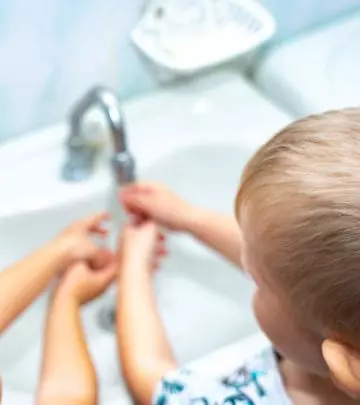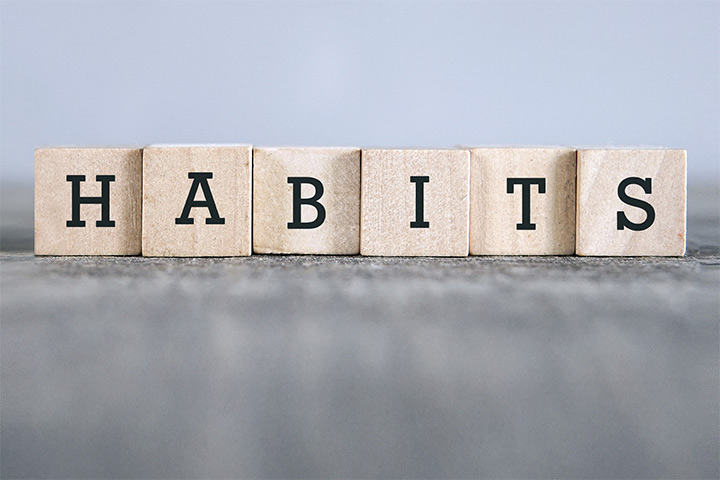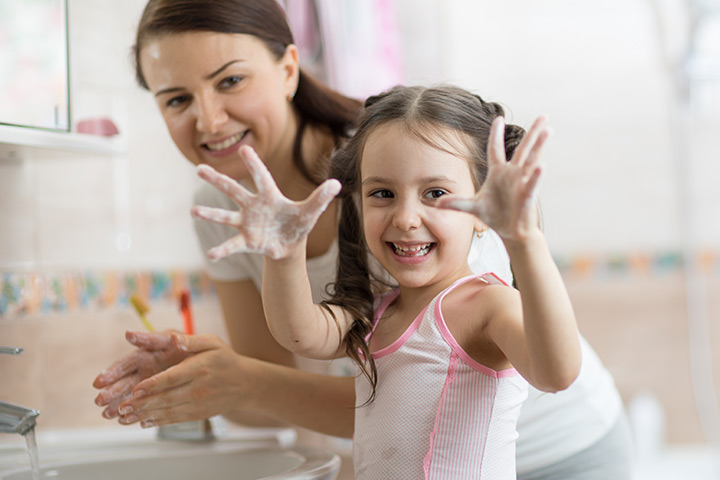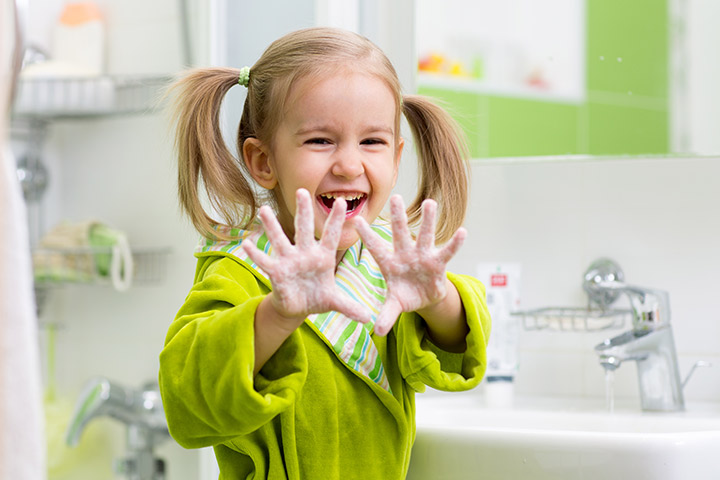
Image: Shutterstock
One of the most effective ways to prevent coronavirus from affecting you is to wash your hands frequently. It is a simple but must-follow rule to stay safe during these trying times. Even as adults we have to consciously remind ourselves to wash those hands regularly, before eating food or just touching your face (1). Therefore, we have to take extra care when it comes to our kids. Not only do we have to instill this practice of frequent handwashing but also see to it that they wash it effectively.
1. Make It A Habit
Though children are not much affected by this virus, they are one of the most adorable germ carriers. Make it their second nature to wash hands. Insist on washing hands before eating, touching their face, or touching a cut or scrape.
It is important to start at an early age.
Make sure that your kid washes hands after the following instances:
- Going to the bathroom
- Playing with mates or pets
- Being in contact with pet food and treats
- Returning from the playground
- Being in contact with a sick person
- Touching something discarded or dirty
Keep reminding them that washing hands not only protects them but also safeguards anybody who comes in contact with them. Associate a positive reinforcement with washing hands. You know you are successful when your child voluntarily steps towards the sink when you announce snack time.
2. Washing Hands Should Be Fun
Avoid making it sound like a chore. Instead, make it into a game among the siblings or reward them for positive behavior. Show them that it is a regular part of life. Participate with them, revealing that even adults have to do it. Invest in a fun-shaped soap so that your child is excited when using it. Sing a song, make a rhyme, indulge their fantasy to make washing hands a fun activity.
3. Teach Them How To Wash Properly
It is a known fact that some water and soap are effective in killing germs. Therefore, encourage your kids to use soap while washing hands. Teach them to hold their hands under clean running water. After soaping up, they should scrub their hands at least for 20 seconds (2). Ensure that they wash all the parts of the hand – between the fingers, back of the hand, front of the hand, nails and also their wrists.
4. Make Washing Hands Easily Accessible
Make sure that your little one can easily reach the sink without your help. If the sink is too high, put a stool next to it so your child can access the sink in your absence. You can also invest in a sink extender to make it easier for your child to wash hands.
Once washing is done, fresh, clean towels should be used to dry out the hands.
A sanitizer is also a viable option, in case one does not have access to soap and water. It doesn’t work so well when your hands are greasy but it is a good backup nonetheless. Pick up an alcohol-based sanitizer that has at least 60% ethanol or 70% isopropanol content (3). Teach your kid to squirt generously and rub it on their hands thoroughly – front, back, and between the fingers.
It is important that your children learn from your behavior. Don’t just preach, join in the fun when they are washing hands. Give them a chance to mimic how careful you are when it comes to the health concerns of the family. Also, don’t forget to be patient with your little one. It may take some time for your child to understand the full significance of such a healthy habit. Help them when they ask for it. It will be easier to get them to wash their hands when they are visibly dirty with mud or paint. The problem appears when the hands look “clean enough”. Inform your children about invisible germs, and remind them to wash hands even if it doesn’t appear dirty.
















